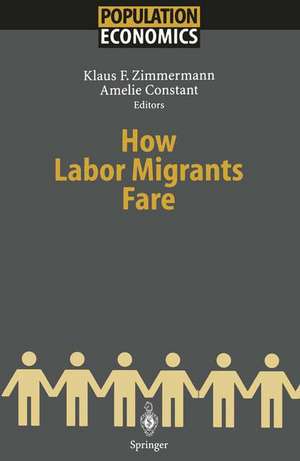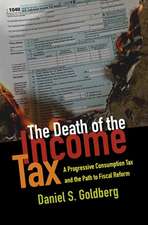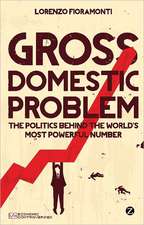How Labor Migrants Fare: Population Economics
Editat de Klaus F. Zimmermann, Amelie Constanten Limba Engleză Hardback – 4 mar 2004
| Toate formatele și edițiile | Preț | Express |
|---|---|---|
| Paperback (1) | 647.08 lei 6-8 săpt. | |
| Springer Berlin, Heidelberg – 3 aug 2012 | 647.08 lei 6-8 săpt. | |
| Hardback (1) | 653.65 lei 6-8 săpt. | |
| Springer Berlin, Heidelberg – 4 mar 2004 | 653.65 lei 6-8 săpt. |
Din seria Population Economics
- 15%
 Preț: 647.59 lei
Preț: 647.59 lei - 18%
 Preț: 954.45 lei
Preț: 954.45 lei - 15%
 Preț: 641.71 lei
Preț: 641.71 lei - 18%
 Preț: 952.40 lei
Preț: 952.40 lei - 18%
 Preț: 950.03 lei
Preț: 950.03 lei -
 Preț: 395.85 lei
Preț: 395.85 lei - 15%
 Preț: 635.47 lei
Preț: 635.47 lei - 15%
 Preț: 637.59 lei
Preț: 637.59 lei - 15%
 Preț: 649.39 lei
Preț: 649.39 lei -
 Preț: 384.31 lei
Preț: 384.31 lei -
 Preț: 391.79 lei
Preț: 391.79 lei - 15%
 Preț: 641.85 lei
Preț: 641.85 lei - 15%
 Preț: 698.15 lei
Preț: 698.15 lei - 18%
 Preț: 785.24 lei
Preț: 785.24 lei - 18%
 Preț: 950.52 lei
Preț: 950.52 lei - 15%
 Preț: 637.59 lei
Preț: 637.59 lei
Preț: 653.65 lei
Preț vechi: 769.00 lei
-15% Nou
Puncte Express: 980
Preț estimativ în valută:
125.11€ • 128.93$ • 105.62£
125.11€ • 128.93$ • 105.62£
Carte tipărită la comandă
Livrare economică 01-15 martie
Preluare comenzi: 021 569.72.76
Specificații
ISBN-13: 9783540006657
ISBN-10: 3540006656
Pagini: 436
Ilustrații: VI, 424 p. 25 illus.
Dimensiuni: 155 x 235 x 29 mm
Greutate: 0.79 kg
Ediția:2004
Editura: Springer Berlin, Heidelberg
Colecția Springer
Seria Population Economics
Locul publicării:Berlin, Heidelberg, Germany
ISBN-10: 3540006656
Pagini: 436
Ilustrații: VI, 424 p. 25 illus.
Dimensiuni: 155 x 235 x 29 mm
Greutate: 0.79 kg
Ediția:2004
Editura: Springer Berlin, Heidelberg
Colecția Springer
Seria Population Economics
Locul publicării:Berlin, Heidelberg, Germany
Public țintă
ResearchCuprins
I Introduction.- How do labor migrants fare?.- II Migration and Eamings.- Natives and migrants in the London labour market, 1929–1931.- How much did immigrant “quality” decline in late nineteenth century America?.- Earnings assimilation of immigrants in Norway — A reappraisal.- Self-selection, earnings, and out-migration: A longitudinal study of immigrants to Germany.- Comparing migrants to non-migrants: The case of Dutch migration to New Zealand.- III Employment, Unemployment, Self-Employment and Occupational Success.- Declining employment success of immigrant males in Sweden: Observed or unobserved characteristics?.- The employment adjustment of male immigrants in England.- The English language fluency and occupational success of ethnic minority immigrant men living in English metropolitan areas.- Labor market assimilation and the self-employment decision of immigrant entrepreneurs.- IV Linguistic Issues and Educational Attainment.- Immigrant earnings: Language skills, linguistic concentrations and the business cycle.- Cohort effects in the educational attainment of second generation immigrants in Germany: An analysis of census data.- V Illegal, Legalized and Unwilling Migrants.- Language skills and earnings among legalized aliens.- Undocumented workers in the labor market: An analysis of the earnings of legal and illegal Mexican immigrants in the United States.- IRCA’s impact on the occupational concentration and mobility of newly-legalized Mexican men.- Aboriginals as unwilling immigrants: Contact, assimilation and labour market outcomes.- VI Policy Issues: Selection Criteria and Public Sector Effects.- Public policy and the labor market adjustment of new immigrants to Australia.- Immigrants and the public sector budget — accounting exercises for Sweden.
Caracteristici
Shows the state of integration of migrants in their new countries Answers important questions for migration policy















